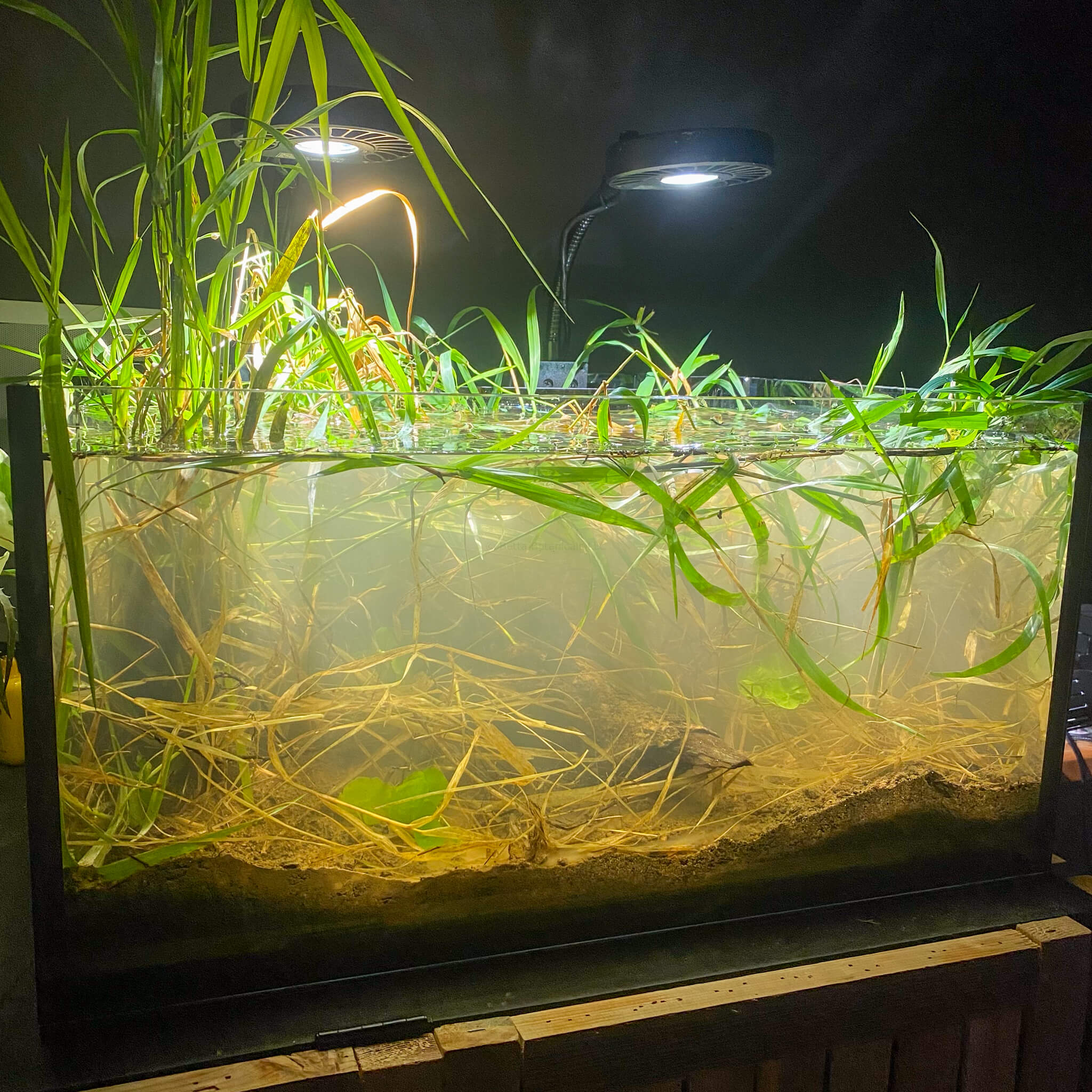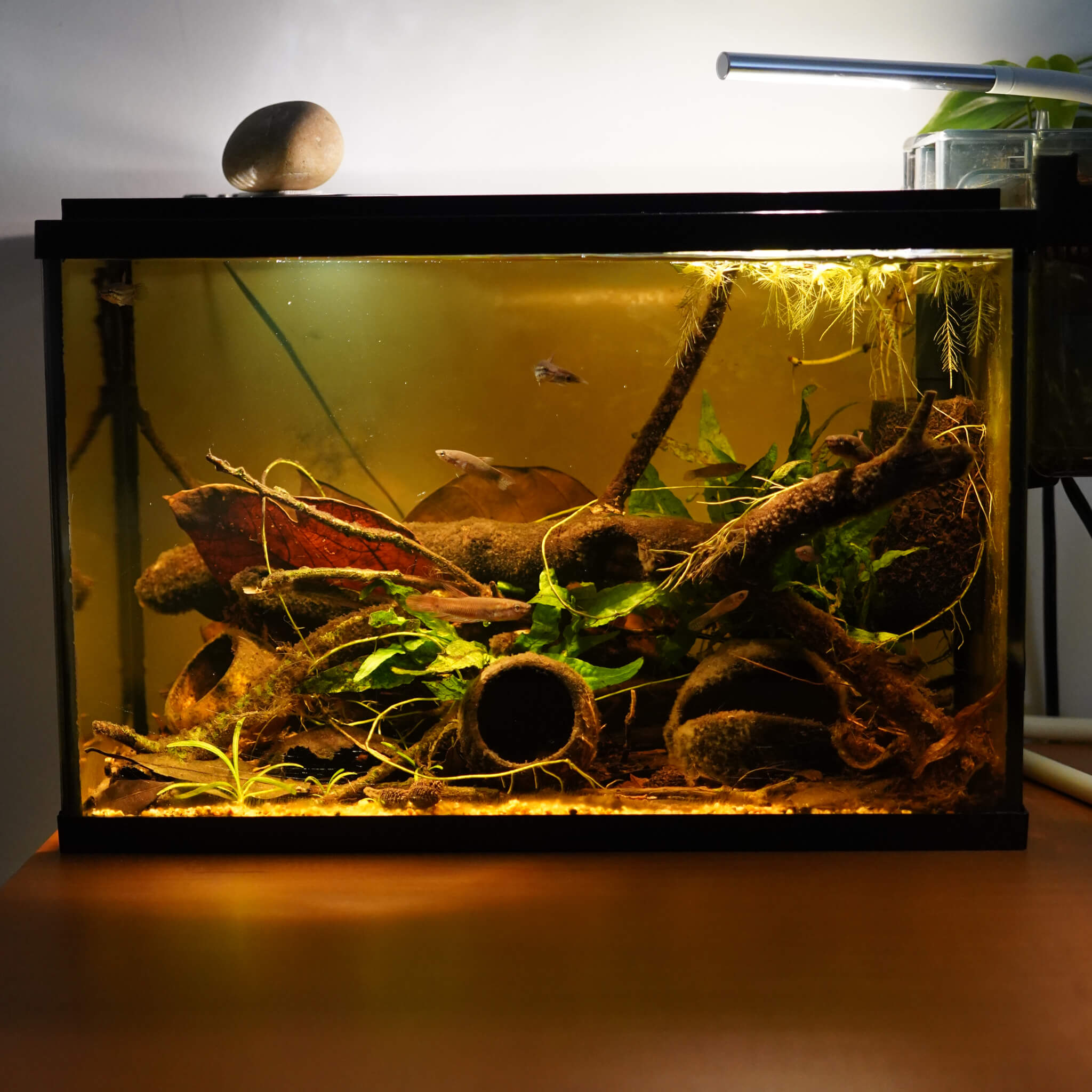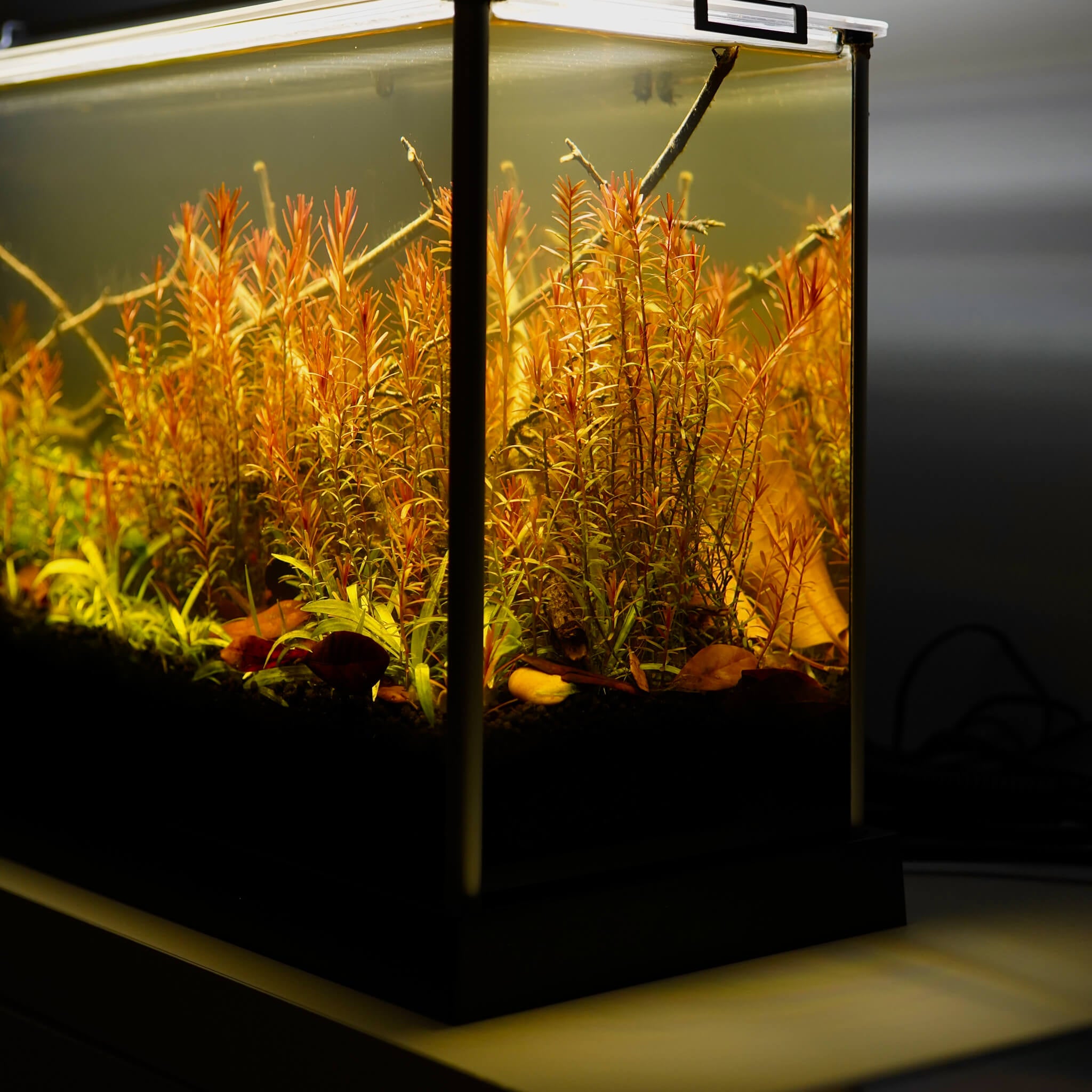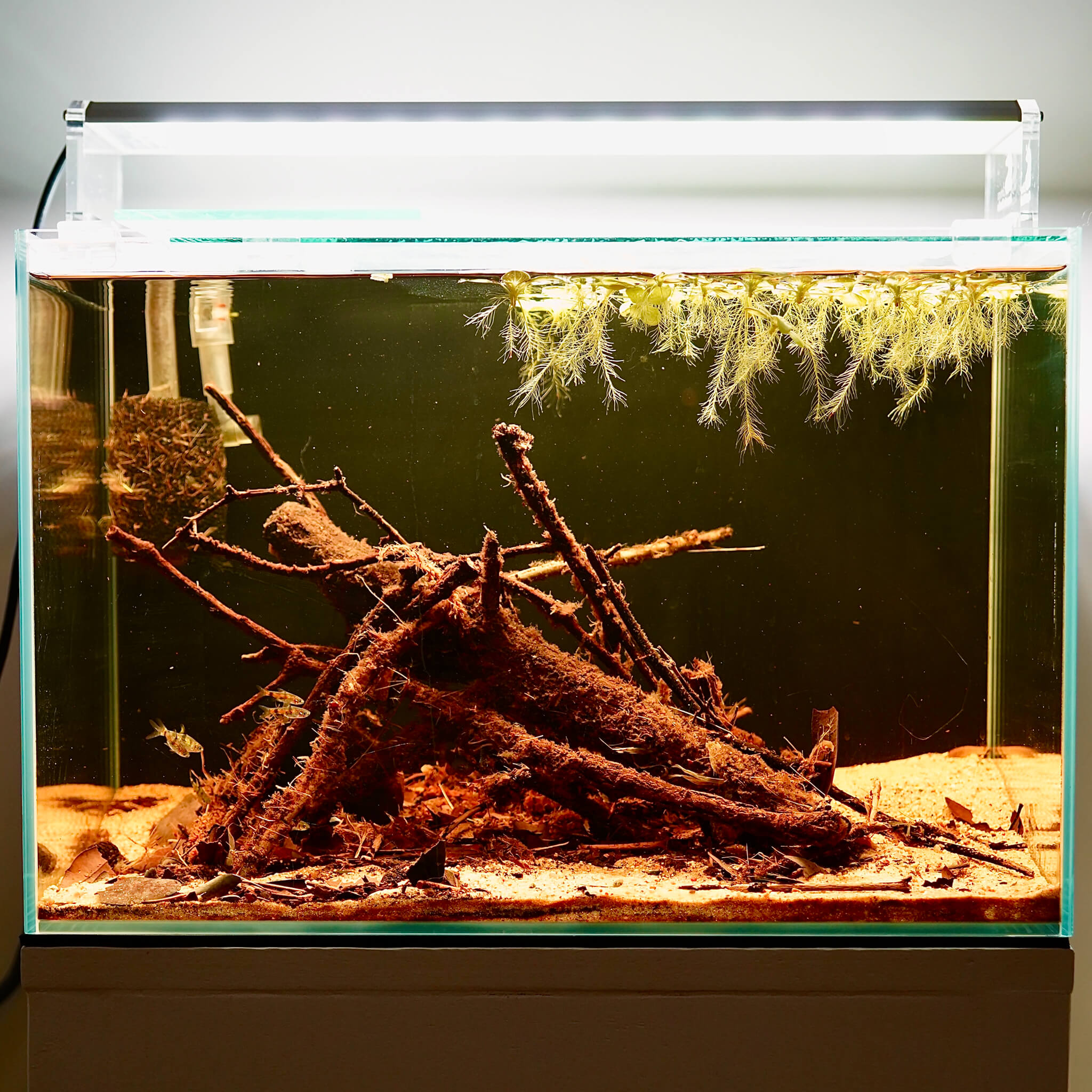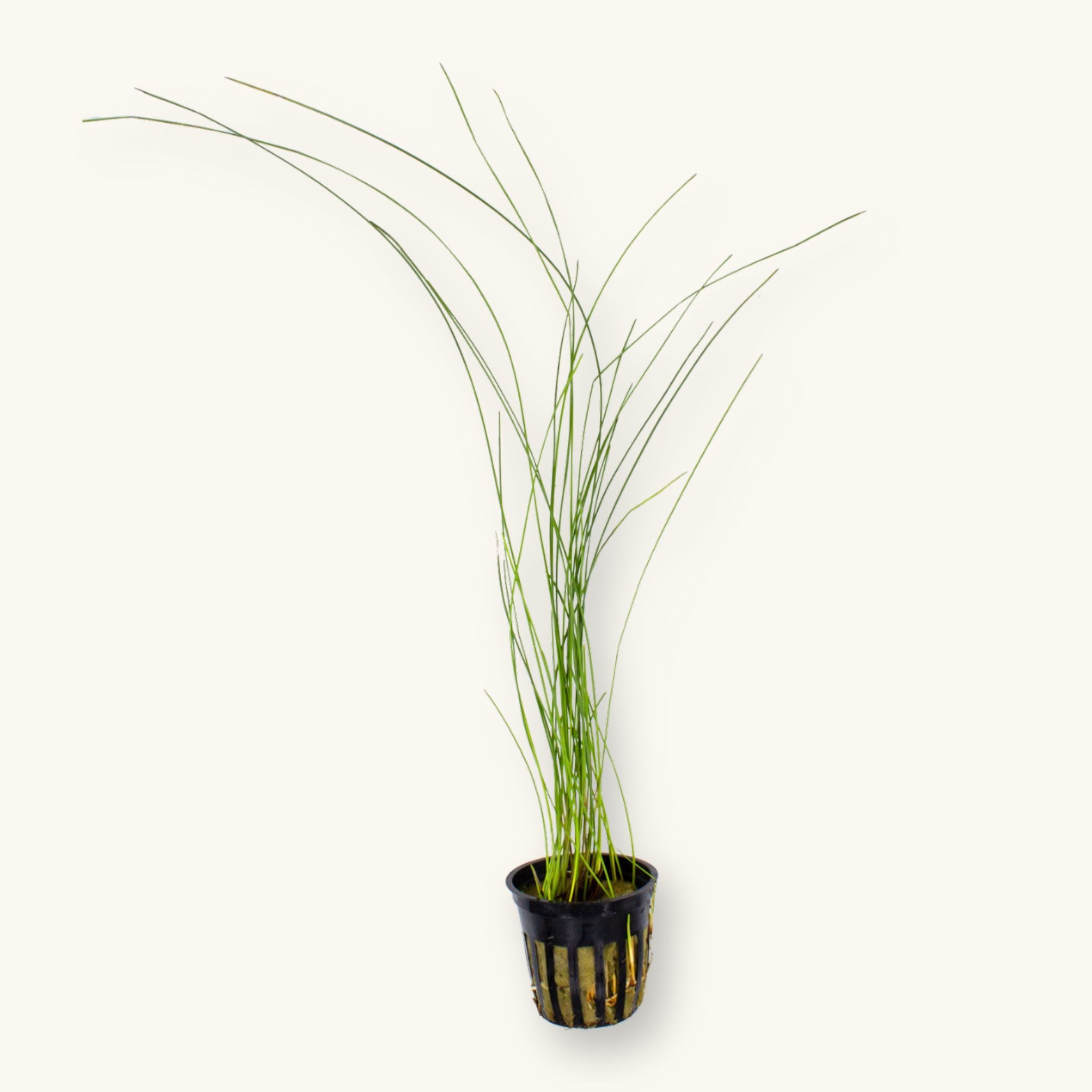
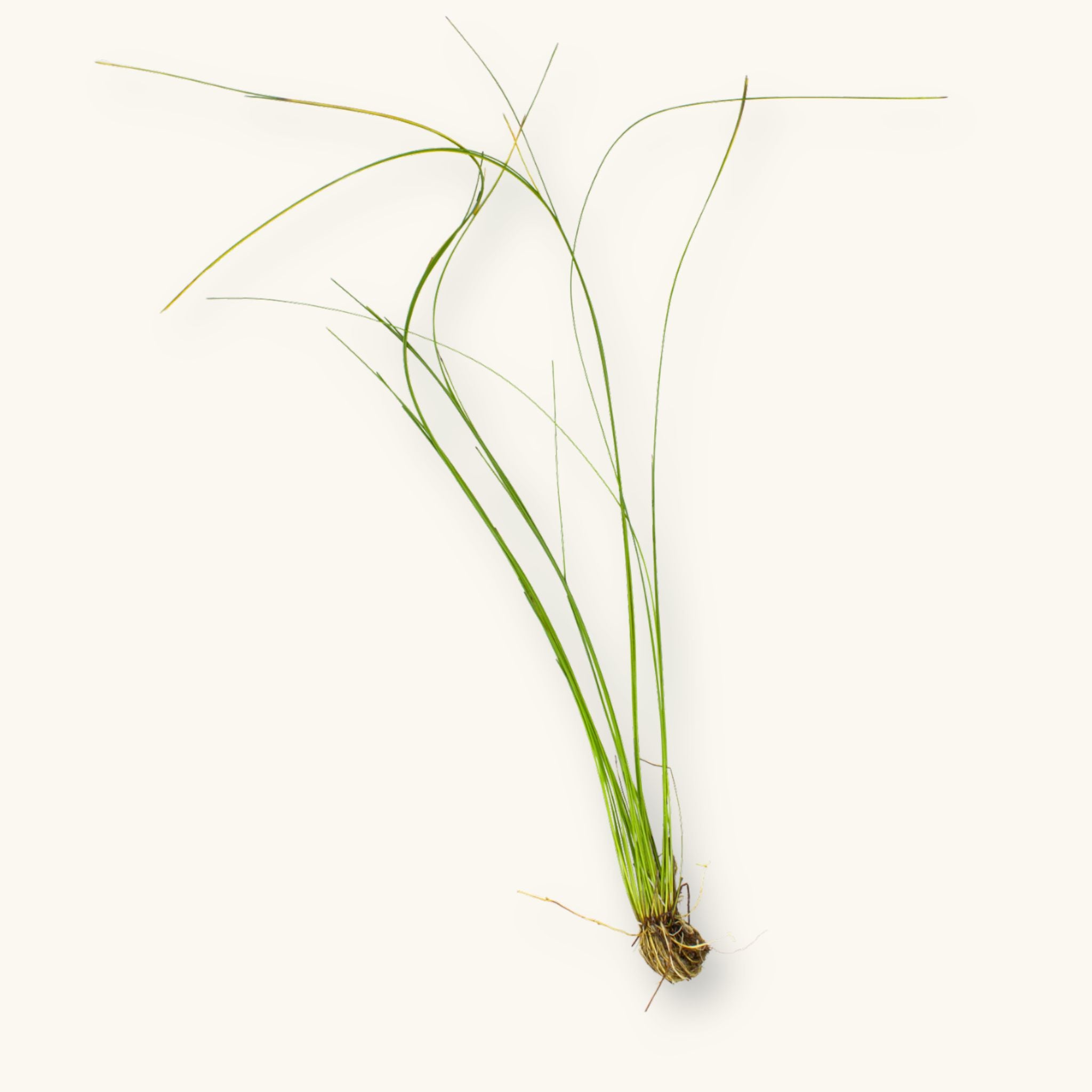
Giant Hairgrass | Eleocharis montevidensis
Giant Hairgrass
Scientific Name: Eleocharis montevidensis
Common Name: Giant Hairgrass, Sand Spikerush
Giant Hairgrass (Eleocharis montevidensis) is a tall, slender grass-like aquatic plant native to North and South America, where it thrives in shallow wetlands and marshy shorelines. Its thin stems can reach 16–18 inches, helping to recreate the look and habitat function of flooded grasslands and stream margins. In blackwater and botanical method aquariums, Giant Hairgrass contrasts nicely with the tinted waters, especially when it becomes colonized by detritus and biofilms.
This species spreads by runners, gradually forming a dense thicket that provides shelter for small fish and fry while improving water quality through nutrient uptake. It’s particularly effective in large aquariums where height and flow accentuate its form. Despite its size, Giant Hairgrass is undemanding—thriving under moderate light, with or without CO₂, and tolerating the tannin-rich water common in blackwater ecosystems.
Though native to North America, its versatility allows it to complement a wide range of biotopes—from South American floodplains inhabited by tetras to Southeast Asian setups with bettas and rasboras. Once established, it requires only occasional trimming to prevent overcrowding and occasional root tab supplementation. This plant has thicker blades than Eleocharis vivipara, which grows slightly shorter.
Caring for Giant Hairgrass in Blackwater Aquariums
Sold As: Potted or bare root
Care Level: Easy; tolerant of a variety of conditions
Lighting Requirement: Low to medium; stronger light promotes faster spread
CO₂: Not required; supplementation enhances vigor
Growth Rate: Fast; propagates by runners forming thick clusters
Tank Placement: Background; ideal for open, high-flow sections
Native Habitat: North and South America; shallow streams, ponds, and wetlands
Tint Tolerance: High; continues steady growth in tinted and shaded conditions
All Plants may contain snails or snail eggs. We keep them in all of our tanks for the benefits they provide. Our blackwater aquarium plants are provided by H2OPlants in adherence to their Shipping and DOA Policies. Your curated selection will arrive in their packaging, separate from your botanical & merch orders.

Giant Hairgrass | Eleocharis montevidensis
contrast the tint with greenery
While the aesthetic appeal of tinted waters can be quite attractive to us, the recreation of nature—which includes both submerged and emersed plants—is the end goal. Flora helps to improve water conditions, feeding patterns, spawning displays, and territory building.
Aquatic Plant FAQs
DOA Policy
Please ensure that you add a heat pack or cold pack to your orders if temperatures in your area are above 90°F or below 40°F. Click for more info on our DOA Policy.
Are these plants duckweed and snail free?
All Plants may contain snails or snail eggs, small macroinvertebrates, and duckweed. We keep them in all of our tanks for the benefits they provide. We have experienced the presence of small snails, ostracods, daphnia, and beneficial detritus worms.
Are your plants only for tinted water conditions?
Nope! All of our plants will grow perfectly in untinted aquariums that have CO2 and aquasoils, or low-tech planted aquariums. Our selection, though, is optimized for emersed plant growth and low- to medium-tinted water environments.
What is your aquatic plant shipping schedule?
We’re a small company and ship Tuesdays & Thursdays only. Orders placed Wednesday–Sunday → Ship Tuesday. Orders placed Monday–Tuesday → Ship Thursday
Are your plants just for bettas?
Nope. Our aquatic plants are safe for almost all aquariums, terrariums, vivariums, and paludariums. Many of our plants can be grown emersed in filter compartments, vivariums, or incorporated into wabikua.
What are Tannins?
Tannins are natural compounds released by leaves, seed pods, and bark as they decompose in water. They soften water, gently lower pH, and create the characteristic tea-stained tint found in blackwater habitats. But their role goes far beyond color—tannins fuel beneficial bacteria, fungi, and biofilms, which form the foundation of a healthy ecosystem. They also offer mild antifungal benefits and help reduce stress in fish by replicating the natural conditions they’ve evolved in. At their core, tannins are plant-derived antioxidants that connect your aquarium to the same processes at work in wild flooded forests and streams.




